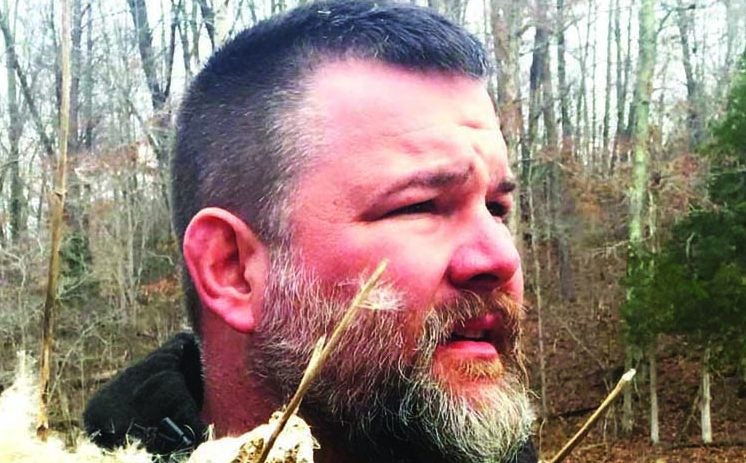Caudill: Kentuckians and flintlock rifles
Published 10:00 am Friday, January 17, 2020

- Craig Caudill is a lifelong resident of Winchester and serves as director of Nature Reliance School.
I had the good fortune to be invited to attend a meeting of the local 4H Shooting Sports Club.
My limited exposure to the group tells me they are doing great things for firearms interest and safety.
I have been asked and am considering assisting them if my schedule allows, so I am on a fact-finding mission with them to see if I can offer help to their already-quality program.
What I was impressed with at the meeting was the parent participation and, perhaps more importantly, the student athletes running most of the meeting.
The student president (I cannot remember her name) was articulate, direct and ran a great meeting. I was impressed.
One of the things this group is involved with is helping youth learn the history, safety and use of muzzle-loading rifles.
Kentucky has a rich history with these rifles.
There are many things in the current vernacular of daily words and phrases that comes from the use of black powder rifles.
I thought I would share a few, and detail their meaning in this column as a means of the celebration of safely using firearms.
When something is described as “lock, stock and barrel” in the modern day it means it is complete and includes what is needed. For muzzleloaders, this means something more physical.
The lock is the actual mechanism that holds the spring and hammer which strikes an ignition source after the trigger is pulled.
The stock is the wood portion of a rifle that supports the barrel, trigger assembly and lock.
The barrel is the portion of the rifle in which a projectile is housed and then gets pushed out the end of the barrel after the small explosion of black powder sends it that way.
For Kentucky and Pennsylvania long rifles, this was a long way.
“Bite the bullet” in the modern day means you deal with a bad or uncomfortable situation even though it is hard to do.
Back in the frontier days, there was often a need to do home or field surgery, joint manipulation or setting of bones. It was often done without anesthetic. What often happened was a lead bullet was placed in the mouth of a patient so they could bite down on it and deal with the pain. Obviously, this is a terrible thing to do now.
“Keep your powder dry” is not often used in modern times but it means to pay attention to seemingly small things that are actually important things.
Most black powder shooters do not use cartridges, casings or the like to hold the charge and bullet. You pore the powder directly into the barrel.
On flintlocks, you also put powder in the pan (more on that later) to make it go off.
If either of those powders get wet, it will not ignite, and the gun will not go off. That is why powder was often carried in waterproof horns made for that purpose.
“Flash in the pan” is a modern phrase that means something, or someone has sudden and brief success. This phrase comes directly from flintlock rifle usage.
The pan of a flintlock rests on the outside of the barrel next to a tiny hole in the barrel. A shooter puts powder in the pan. Once the hammer is cocked and trigger is pulled, a piece of flint attached to the hammer comes down and strikes the frizzen.
The flint shaves off small pieces of iron that spark because of the quick friction and those sparks hit the powder in the pan.
The rifle is designed so powder goes through the tiny hole and ignites the powder inside the barrel to make the bullet go forward.
Sometimes the powder in the pan is the only thing that ignites, and the gun does not go boom. It only flashes in the pan. Which once again means it has sudden, yet brief success but does not accomplish its end goal.
“Going off half-cocked” means to act or speak prematurely.
When you pull the hammer back on a rifle to fire it, it is called cocking the hammer.
When you do this for most muzzloaders there are two positions you get an audible click, and the hammer stops.
Many muzzleloaders are not designed to go off in that first position. That first position is called is half-cocked. They are designed to be pulled back to the second position which is full-cocked.
Therefore, if a rifle goes off in that first position it has “gone off half-cocked.”
This column has not even scratched the surface of the US Army Combat Infantry Badge having a flintlock rifle on it and why. Nor has it covered the reputation that Kentuckians have earned as longshooters capable of very long shots. Perhaps that will come another day.
So, for now I will bite the bullet and keep my powder dry, while I develop another column that is lock, stock and barrel on the topic.
I don’t want to go off half-cocked in only one column, do I?
Until that time, I hope to see you on or off the trail.
Craig Caudill is a lifelong resident of Winchester and serves as director of Nature Reliance School. He is the author of “Extreme Wilderness Survival,” “Ultimate Wilderness Gear” and “Essential Wilderness Navigation.” Contact Craig at info@naturereliance.org or through any of the various social media platforms available.





